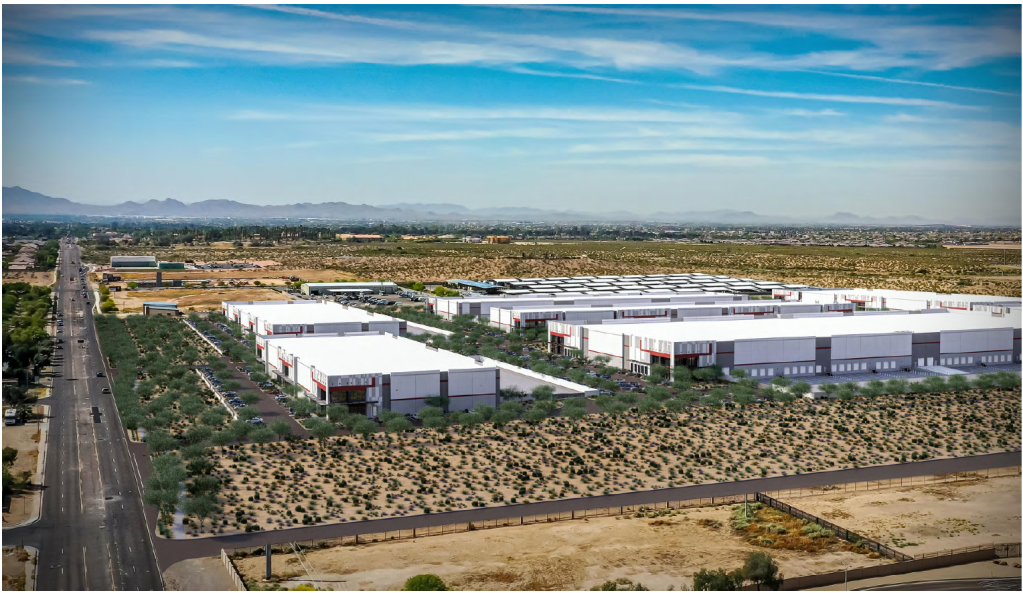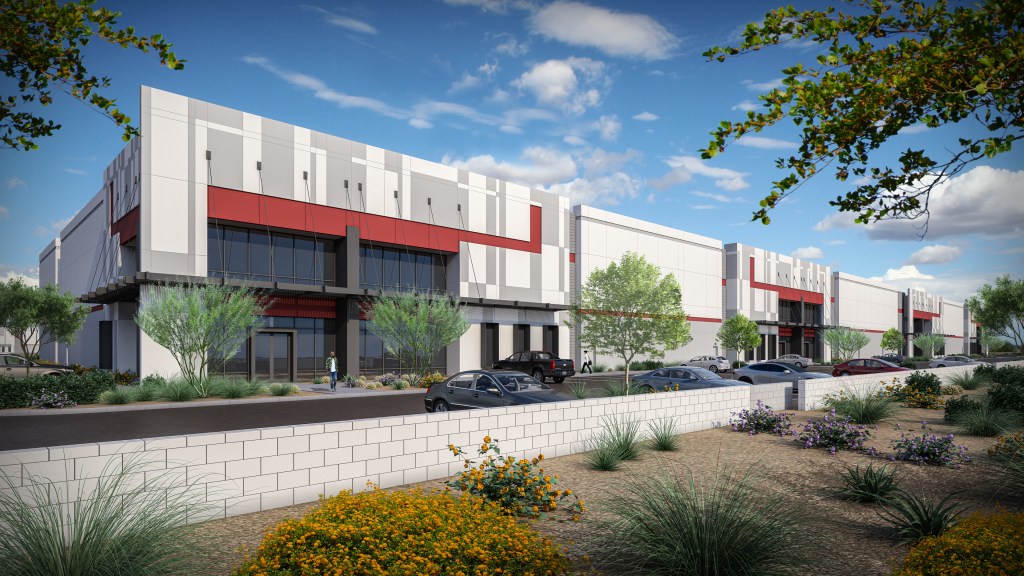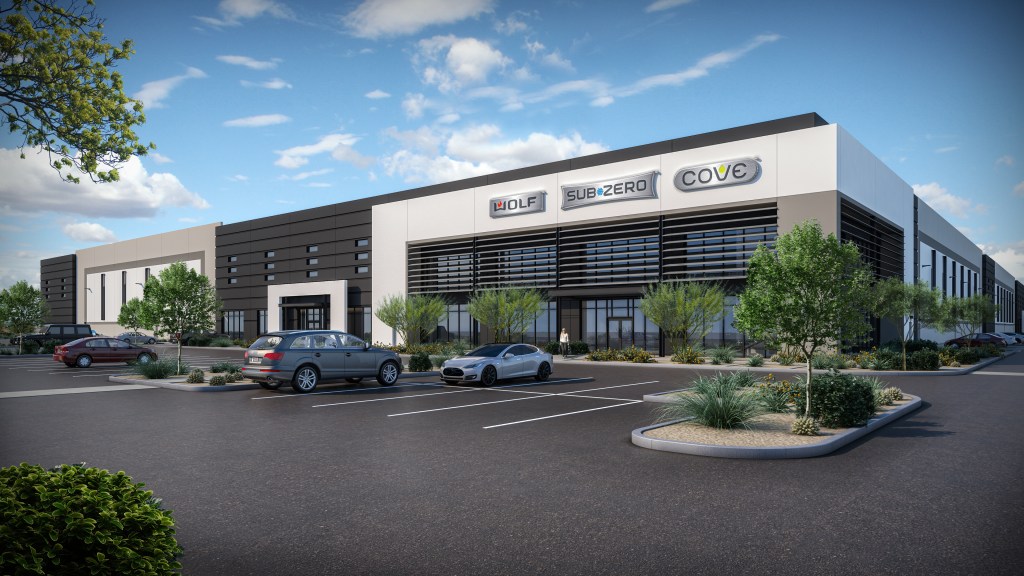Is There More Room for Growth in the Phoenix Industrial Market?
ViaWest's Steven Schwarz on whether this fast-emerging market will keep up the pace.
Across the country, demand for industrial space has remained elevated and occupancy has stayed solid, despite the record levels of new supply coming online. Although industrial construction starts have slowed down in recent quarters due to a combination of interest rate hikes and tightening lending conditions, developers are still actively adding to the stock.
At the end of May, the largest pipeline on a percentage of stock basis in the country was found in Phoenix—16.6 percent, 58.4 million square feet underway—CommercialEdge data shows.
Why do developers continue to build here? Are there any fears of oversaturation in the booming Phoenix industrial market? Commercial Property Executive reached out to Steven Schwarz, founding partner of ViaWest Group, to talk about the metro’s prospects. The company has been very active across the Valley and in the broader western area since its founding two decades ago, currently having more than 15 industrial projects in various stages of development.
READ ALSO: Semiconductor Boom Continues to Boost CRE
Is industrial demand still outpacing supply today in Phoenix?
Schwarz: Demand for industrial space is still quite strong throughout metro Phoenix, however it has cooled off a bit from the frenzy of 2021 and early 2022. We absorbed approximately 4 million square feet this past first quarter and should be in the same realm for the second quarter which puts us on pace for roughly 15 million square feet for the year. This is quite less than the 25 million square feet from the prior couple of years but well ahead of any record year before 2020.
However, it is important to look at the demand pipeline that the brokers, Greater Phoenix Economic Council and Arizona Commerce Authority are all tracking, which shows record levels of user interest. We believe that a number of these deals will come to fruition and that many that don’t near term will land as soon as there is comfort in Corporate America to make major investments. Metro Phoenix is very well positioned in this regard.
When comparing demand to supply one really needs to break it down by size of buildings and submarkets. There is a lot—over 40 million square feet—under construction but roughly 25 percent of this is preleased/build-to-suit, which drops the available under construction number to low 30 millions. So, this is only two years of supply and it takes 14 to 15 months to build these buildings. That being said, we feel that the really large buildings on the west side may be getting overbuilt with a slowdown occurring in these very large requirements. While, alternatively, we are commencing construction next month on a seven-building, 1.2 million-square-foot logistics park because we feel there remains a shortage of buildings in the 85,000- to 310,000-square-foot range in the general submarket.
Could you please expand on this upcoming megadevelopment?
Schwarz: This project is called The Base Industrial Park. We will be starting construction next month on Phase I… Phase II of 780,660 square feet will commence upon substantial leasing occurring in Phase I. This project in total is a little bit larger than other deals we have done but conceptually fits the same mold of developing buildings that match where absorption is occurring and that others are not able to build competitively.
We have 15 projects totaling 4.5 million square feet currently in developments in the Southwest U.S., and we feel the market dynamics for this project are the strongest of all of them. We are getting economies of scale on our construction costs by building all these together enabling us to offer competitive lease rates. It makes it quite difficult for a one-off 100,000-200,000-square-foot building to compete with us when their basis will be much higher. It is early to see much leasing activity at this stage, but we do have a few inquiries that seem quite compelling.
Earlier this year, you broke ground on an almost 600,000-square-foot, build-to-suit project in Goodyear, Ariz., for Sub-Zero. How has tenant demand shaped the project?
Schwarz: This build-to-suit for Sub-Zero is a really good project for the market. It is a 599,351-square-foot manufacturing facility with some distribution that will complement their current facility across Cotton Lane and bring a good number of high-paying jobs to the market. This project exemplifies the user demand that continues to drive the market, which is looking for access to affordable labor, friendly business climate, expedited city approvals and quick construction timeframes.
To what extent is today’s financial landscape and the overall slowing economy impacting your projects?
Schwarz: …The challenging economic environment does have some beneficial aspects to it, such as keeping supply in check due to high interest rates resulting in many developers sitting on land because their project no longer pencils. All this has resulted in a healthy supply-demand situation.
Our Phoenix projects are all benefiting from others pausing as our underwriting remains in order and there is less competition than we expected. We do have a few projects outside of Arizona in markets that aren’t seeing as much demand as Phoenix and therefore have less rent growth. Simultaneously, our underwriting on those deals has been squeezed by higher interest rates, so we are currently trying to determine if we have enough underwritten profitability to justify proceeding with construction. Alternatively, we could wait for interest rates to come down, construction costs to dip, or rental rates to grow. We are still actively looking for opportunities but with a new set of return thresholds.
Which Phoenix industrial submarkets are most in demand today and why? Any submarkets that are in danger of overbuilding?
Schwarz: The submarkets that continue to have a very healthy supply-demand environment are basically anything infill, such as Sky Harbor, Tempe and West Phoenix. There is constant demand and a limited number of available land sites and new projects, which, when coupled with excellent access to the Valley-wide freeway system, proximity to the airport and labor and central location, results in a very healthy industrial real estate environment.
Everywhere else is still seeing strong demand as well but could be subject to some overbuilding in certain sizes, such as ‘big bombers’ on the west side. We are also cautiously watching the Mesa Gateway submarket because of an abundance of new supply coming on out there while, as a new submarket, it doesn’t have decades’ worth of history to prove out the projected net absorption numbers.
What types of industrial assets are the most sought-after nowadays?
Schwarz: The industrial market continues to evolve as demand increases for light manufacturing facilities. To cater to today’s users, buildings need to continue to be built to accommodate distribution users, which includes adequate clear height, truck court depth and trailer staging, while also having adequate power, parking and an environment conducive to manufacturers. We are also seeing a substantial increase in air-conditioned warehouses versus evaporative-cooled due to the cost efficiency of today’s HVAC and the benefits of lower temperature space to employees and inventory. We are now seeing less skylights due to the strong foot-candles provided by LED lighting coupled often with clerestory windows.
Buildings providing all these elements are achieving the highest rents, but unlike years past, due to vacancy hovering around 3 percent, nearly every industrial building is experiencing good to great demand. These days, until vacancy rates move up, it is just a matter of how high can a landlord push rents based on the attributes of the property.
READ ALSO: The Rise of Co-Warehousing—What’s the Appeal?
In your opinion, what trends will define the Phoenix industrial market in the next few years?
Schwarz: Metro Phoenix is extremely well-positioned going forward. The most significant trend has already begun, which is our ability to win mega manufacturing deals, such as TSMC, LG and others. This is a huge driver to our economy, and we likely will continue to outperform in this area, which will result in another trend currently taking place which is ancillary businesses to these mega-deals needing space in our market.
Our proximity to California will never change, which continuously drives demand in Metro Phoenix for distribution, e-commerce and manufacturing that either needs a West Coast presence and/or wants out of California. The evolution and diversification of the Phoenix economy will only accelerate from here resulting in growth in all types of industries from advanced manufacturing to health care to autonomous vehicles.
What are ViaWest’s industrial arm’s goals for the rest of the year and beyond?
Schwarz: ViaWest remains quite active with the 15 developments currently in the early to late stages. Our goals for this year are to commence vertical construction of a handful of new projects—The Base at Litchfield Road and Bethany Home in Glendale, Ariz.; Cove Logistics at 37th Ave. and Van Buren in Phoenix; Goodyear Industrial Phase II at Elwood and Sarival in Goodyear; Downtown Distribution Center in Denver; Central Commerce Logistics in Salt Lake City, and a few others—while completing and leasing up the six projects that are nearing completion.
We also are very actively acquiring quality, well-located, multi-tenant, small and mid-bay, industrial assets with mark-to-market opportunities that can be purchased below replacement cost. In this strategy, we currently have agreement on terms on three separate projects ranging in size from approximately $5 million to $100 million. We are also monitoring our land inventory and looking to procure sites at a good basis that we can either put into production immediately or hold for future pipeline.
Is there anything else about the Phoenix industrial market that you would like to add?
Schwarz: The conversations about Phoenix have changed in the last couple of years with it now being considered a primary industrial market from a leasing perspective and also now from a capital markets perspective in the eyes of many. This is a result of our performance during and after COVID-19 and the acceptance of the market drivers that make this a high-absorption market. As the largest metro outside of California in the western U.S. and as the closest large metro in proximity to Southern California, our future is very bright in the near-term and long-term.











You must be logged in to post a comment.